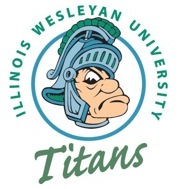Below is a summary of the abstract you submitted. Presenting author(s) is shown in bold.
If any changes need to be made, you can modify the abstract or change the authors.
You can also download a .docx version of this abstract.
If there are any problems, please email Dan at dar78@pitt.edu and he'll take care of them!
This abstract was last modified on May 18, 2021 at 1:31 p.m..

The diversity of bacteriophages is likely unparalleled in the biome due to the immense variety of hosts and the multitude of viruses that infect them. Recent efforts have led to description at the genomic level of numerous bacteriophages that infect the Actinobacteria, but relatively little is known about bacteriophages infecting other prokaryotic phyla, such as the purple non-sulfur photosynthetic α-proteobacterium Rhodobacter capsulatus. This species is a common inhabitant of freshwater ecosystems and has been an important model system for the study of photosynthesis. Additionally, it is notable for its utilization of a unique form of horizontal gene transfer via a bacteriophage-like element known as the gene transfer agent (RcGTA). Only three bacteriophages of R. capsulatus had been sequenced prior to this report. Isolation and characterization at the genomic level of 26 new bacteriophages infecting this host advances the understanding of bacteriophage diversity and the origins of RcGTA. These newly discovered bacteriophages and the three previously sequenced isolates can be grouped into 6 clusters with four remaining as singletons. Shared genes between RcGTA and the newly isolated phages are present and seem to be related to host recognition. One bacteriophage was found to cause lysis of a marine bacterium when exposed to high titer lysate. Although some clusters are more highly represented in the sequenced genomes, it is evident that many more bacteriophage types that infect R. capsulatus are likely to be found in the future.

